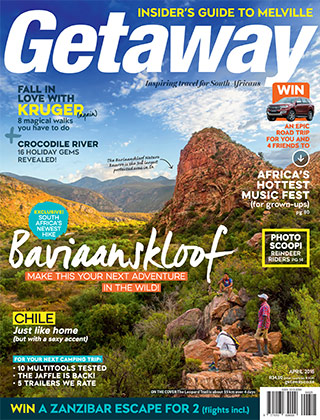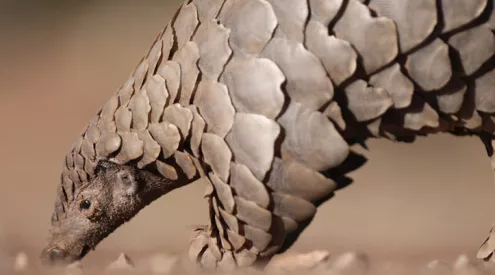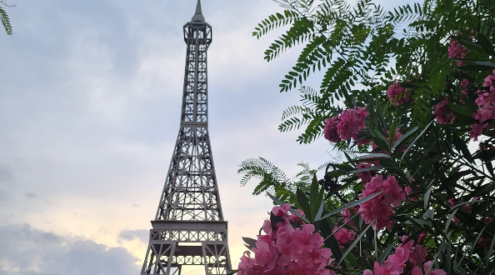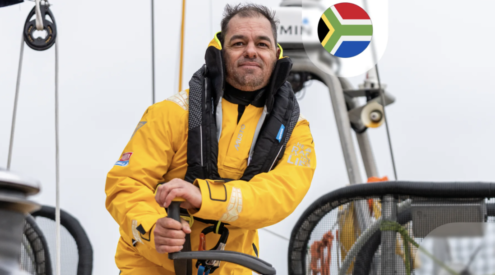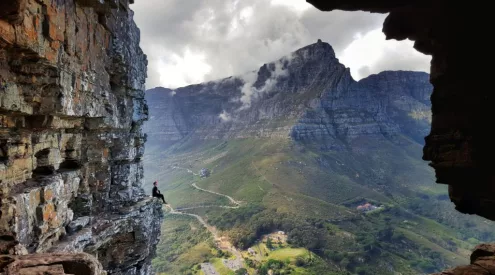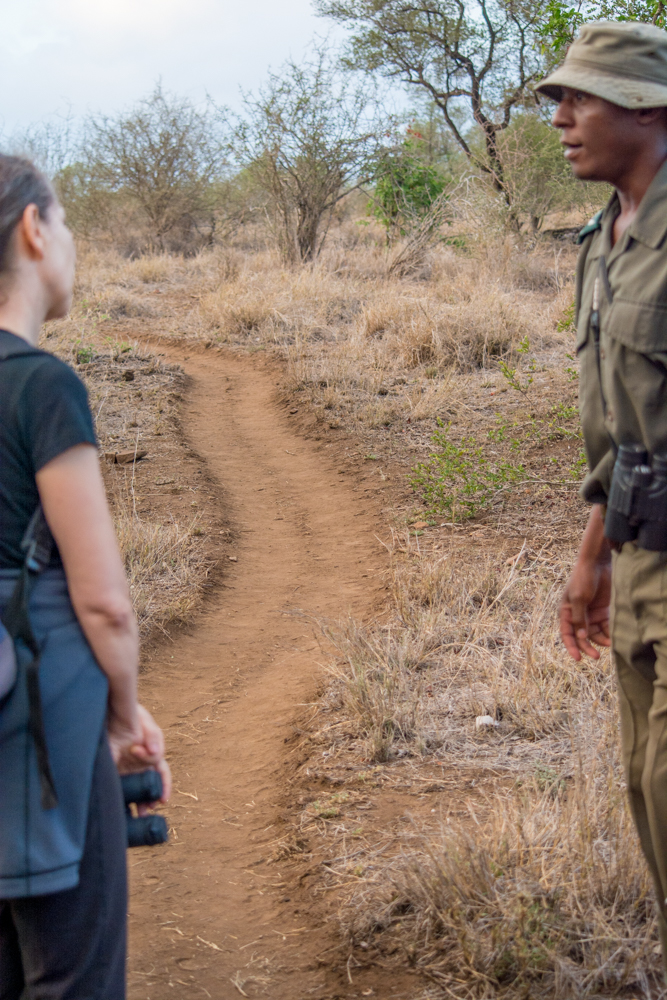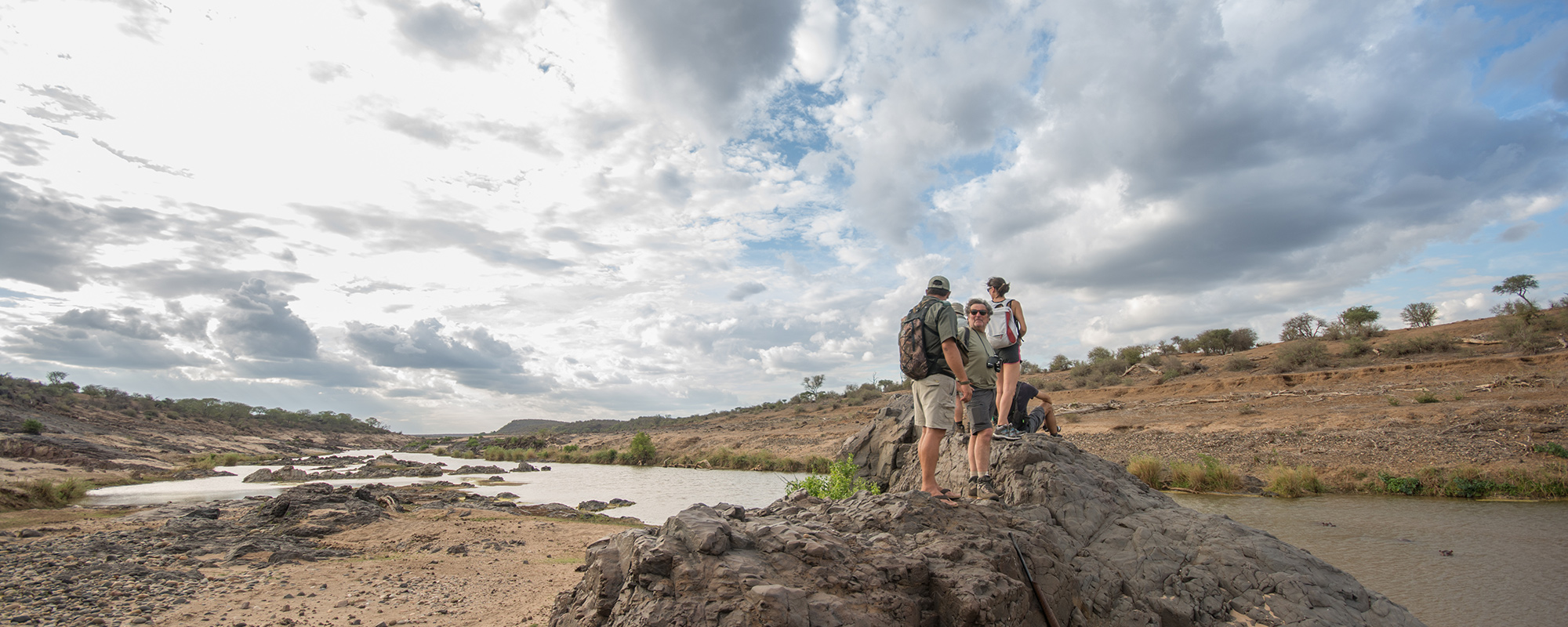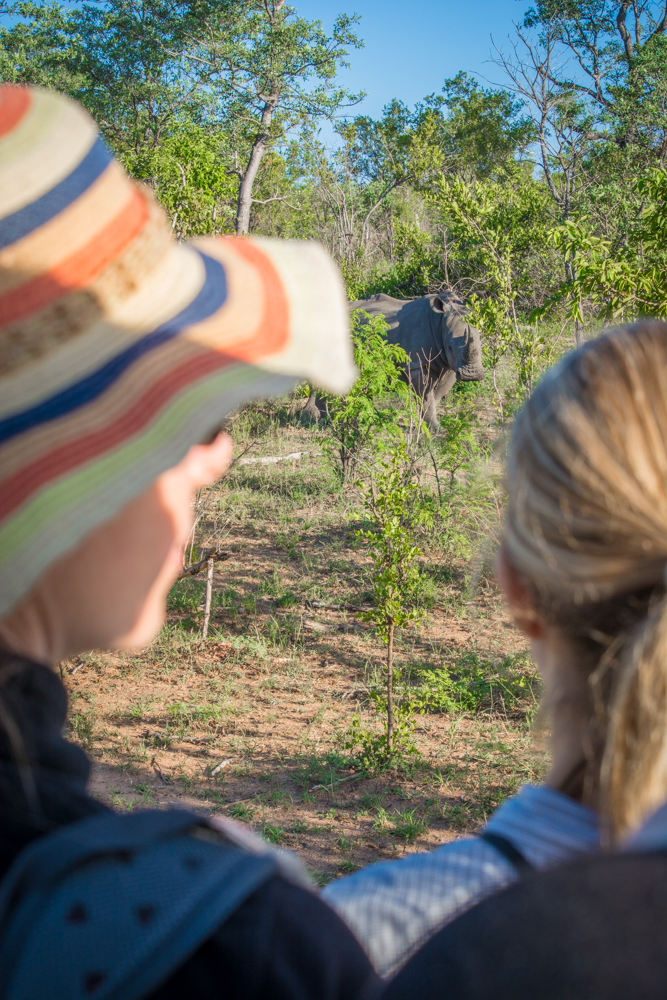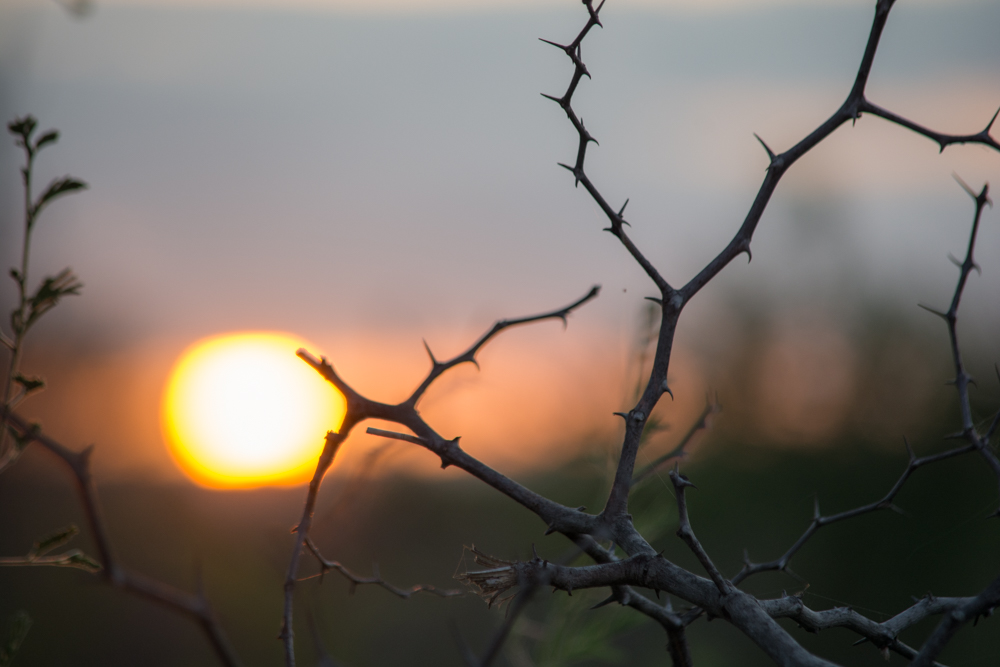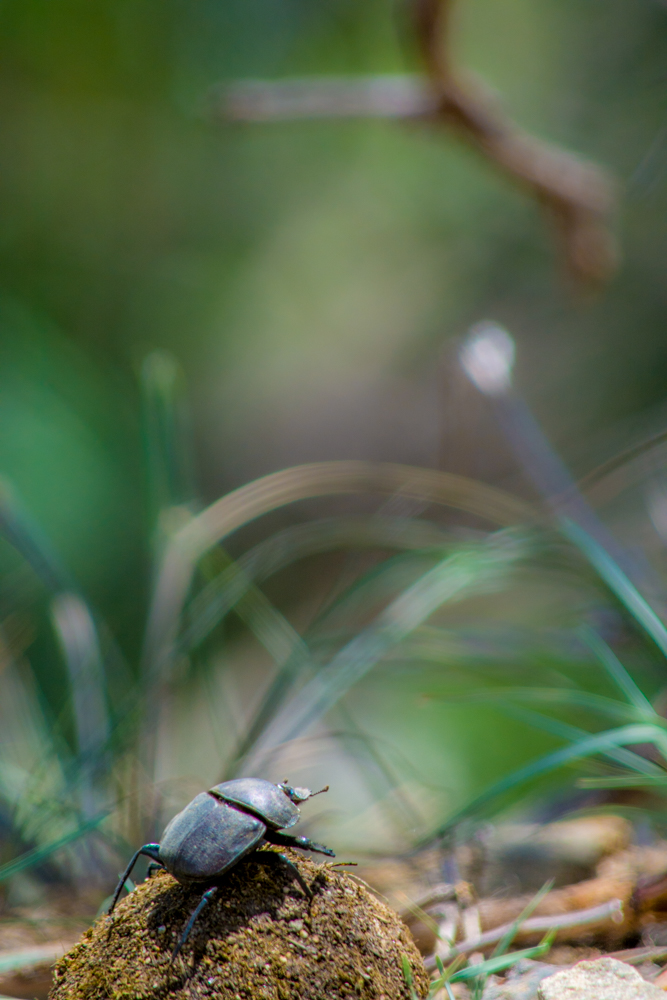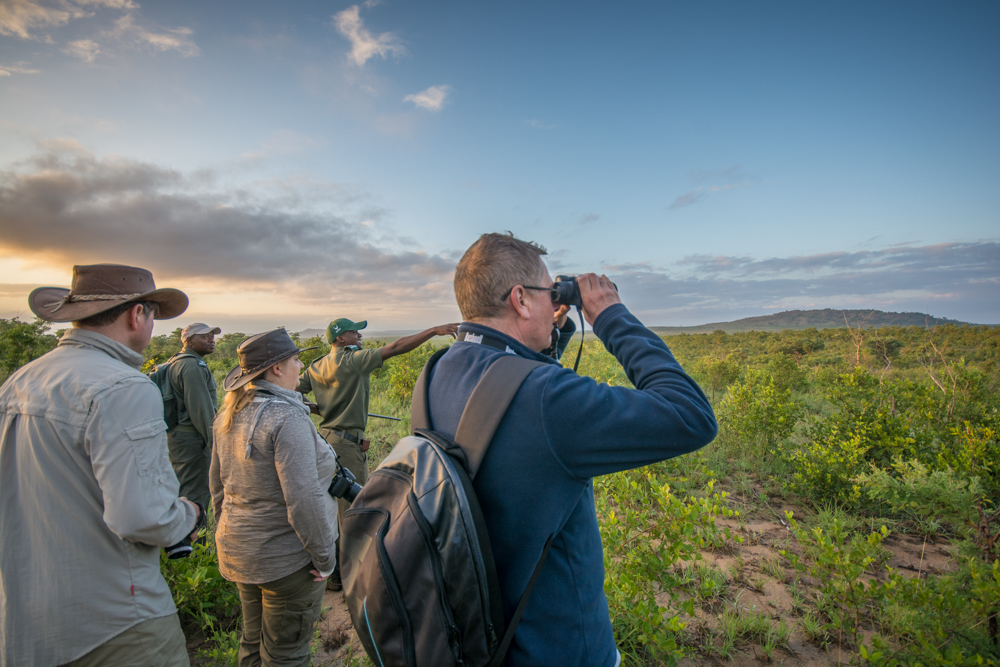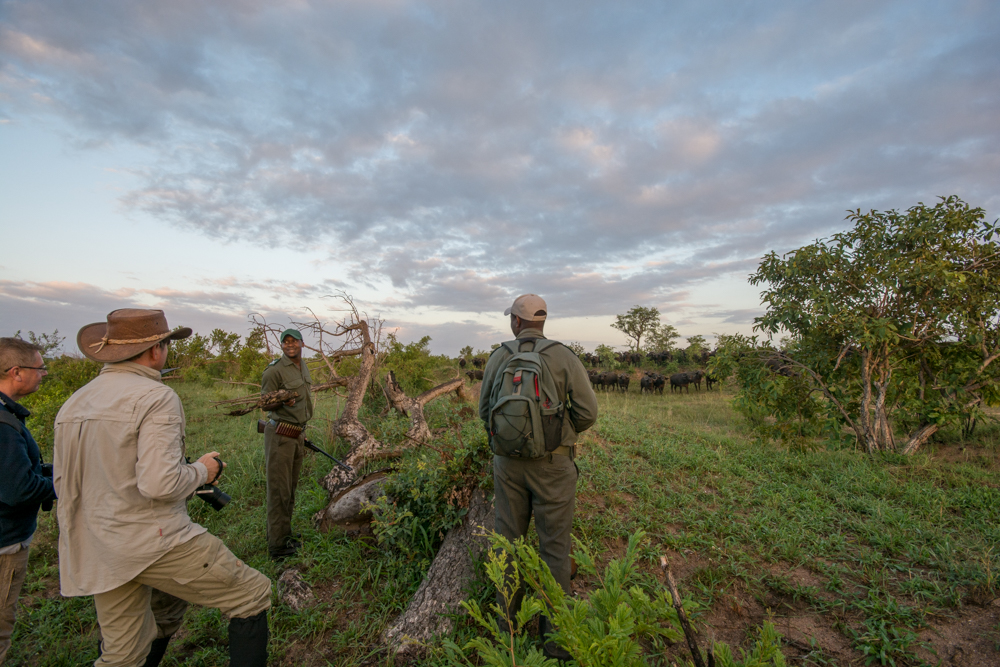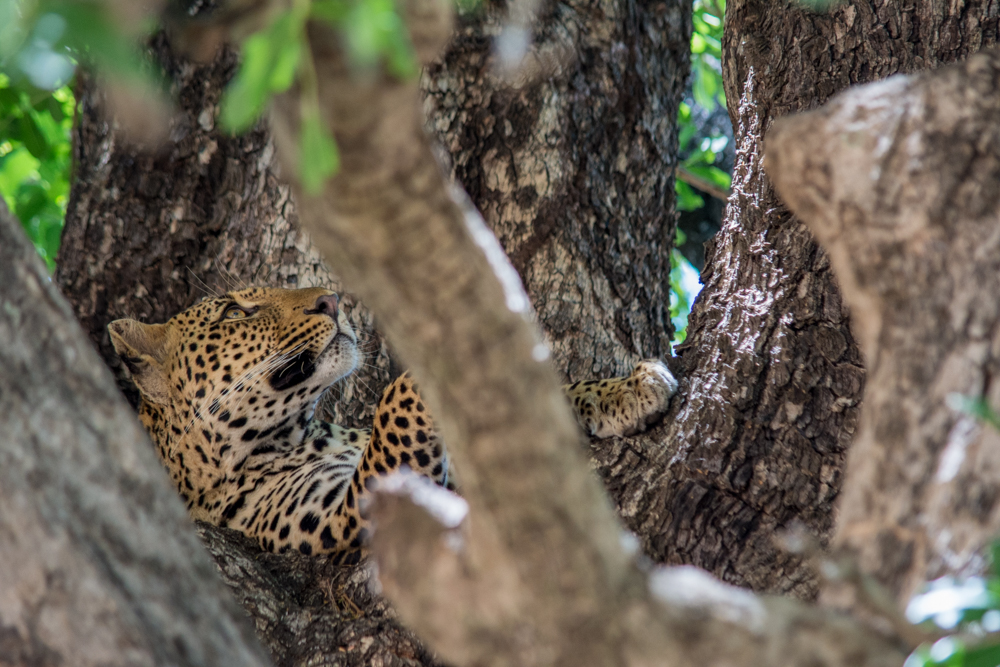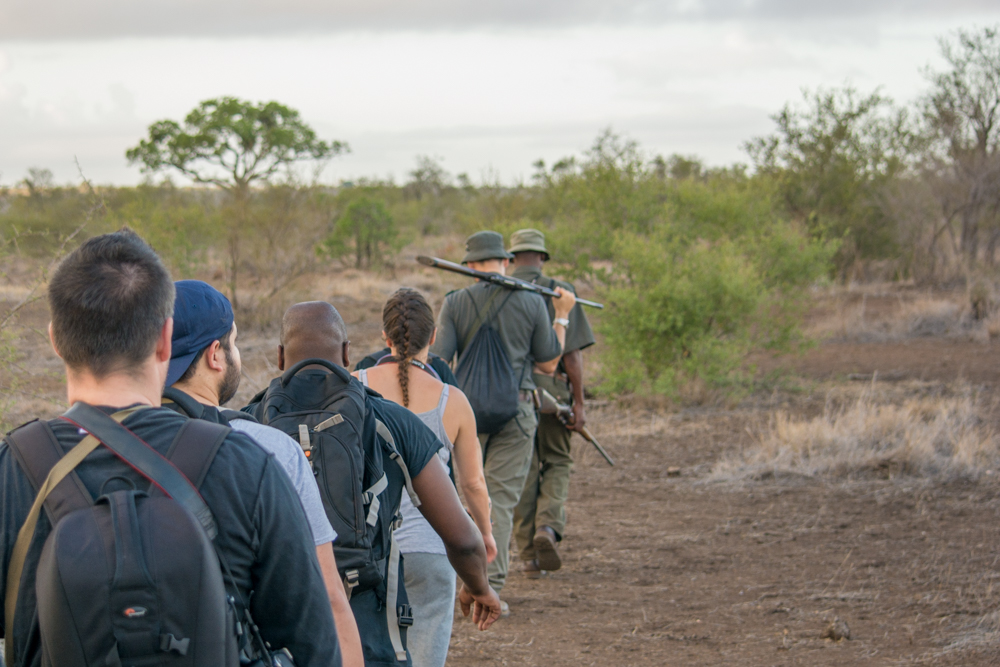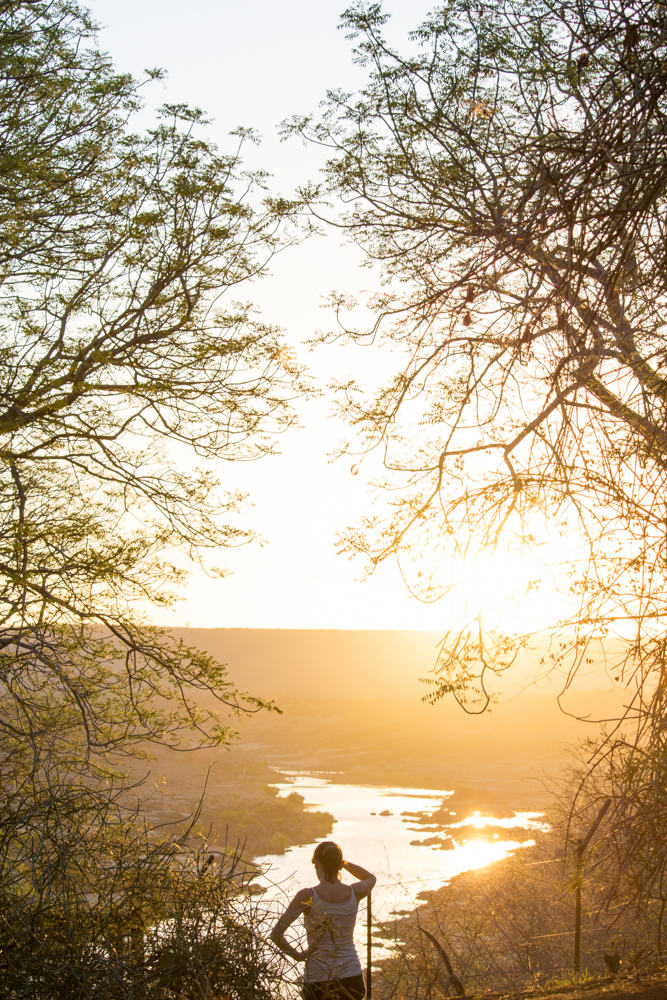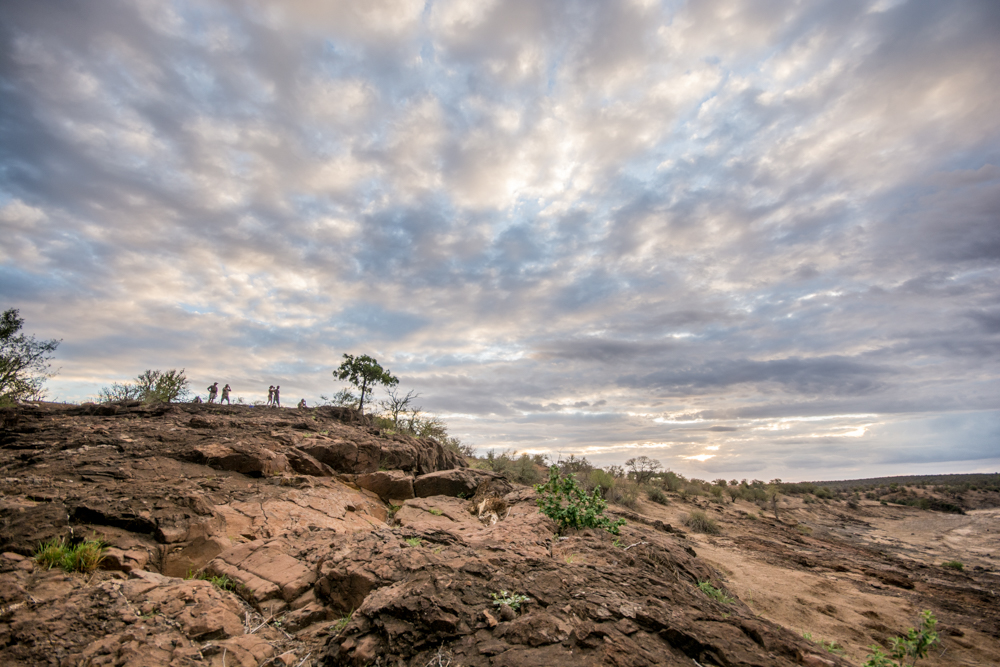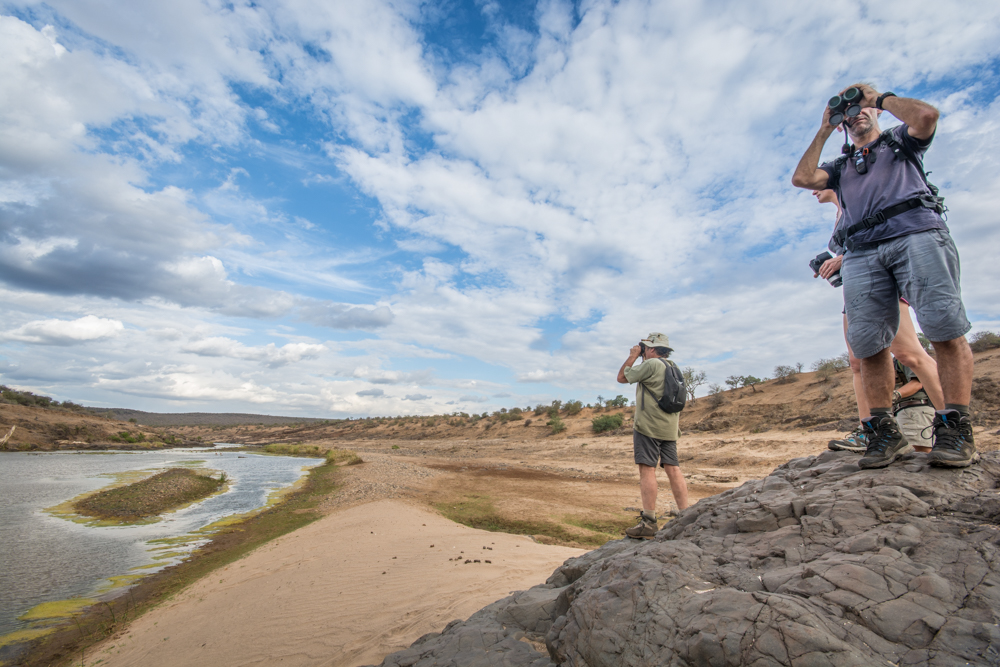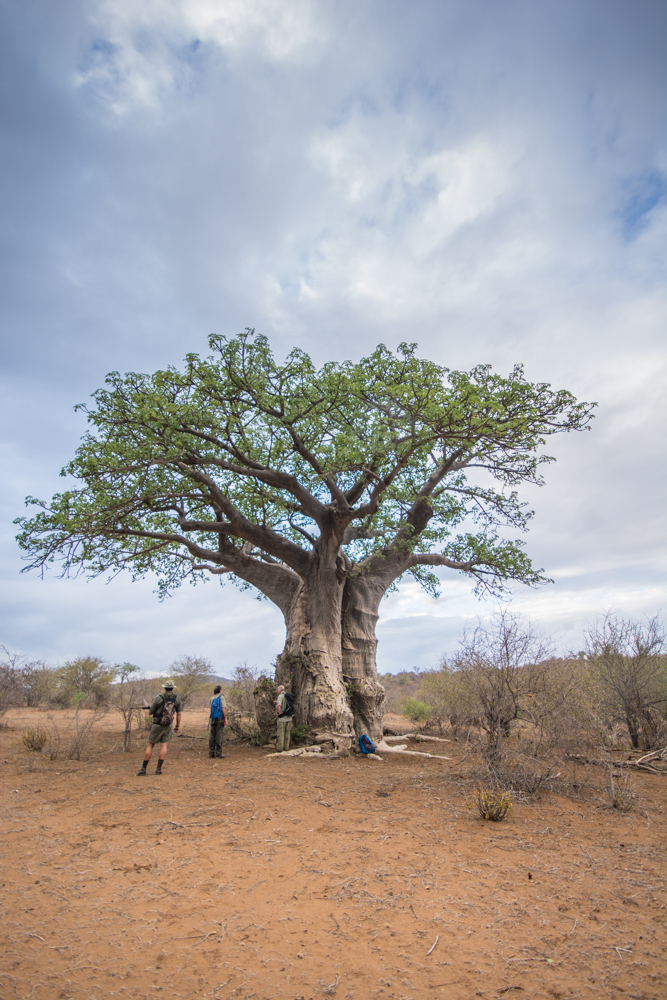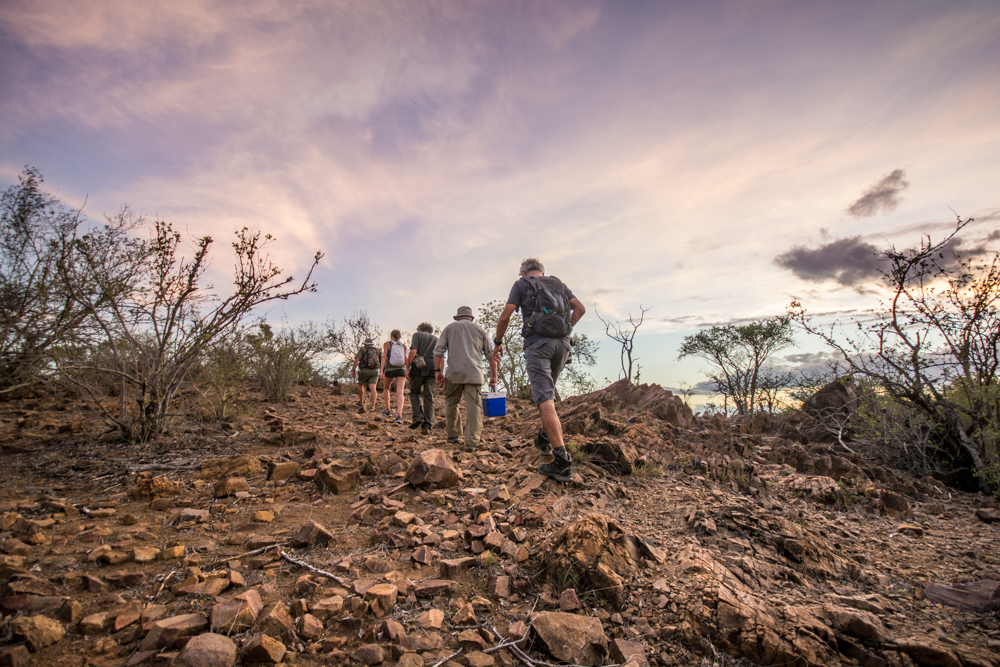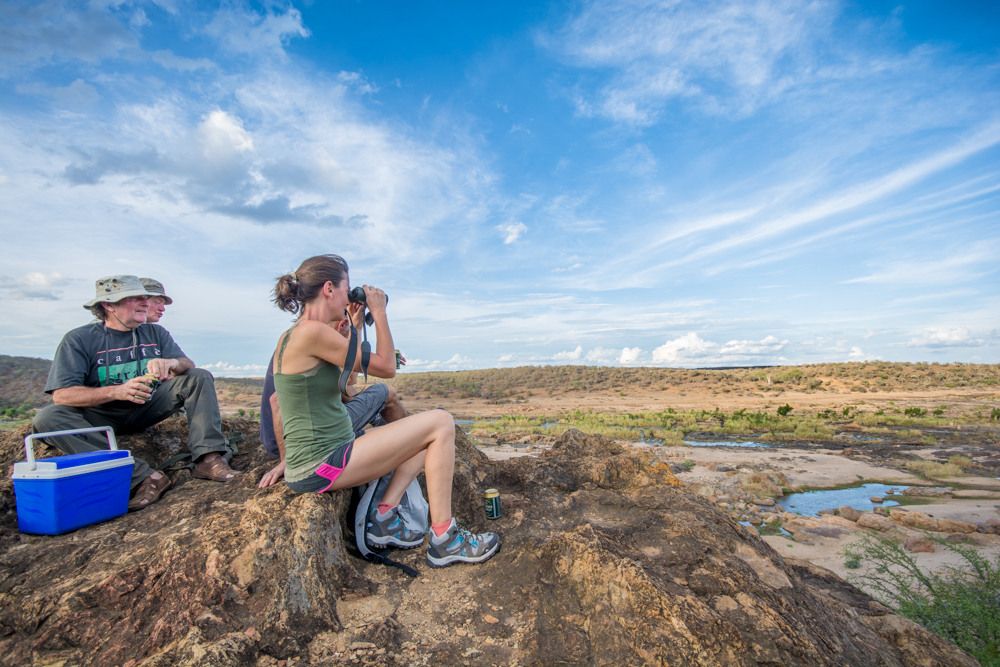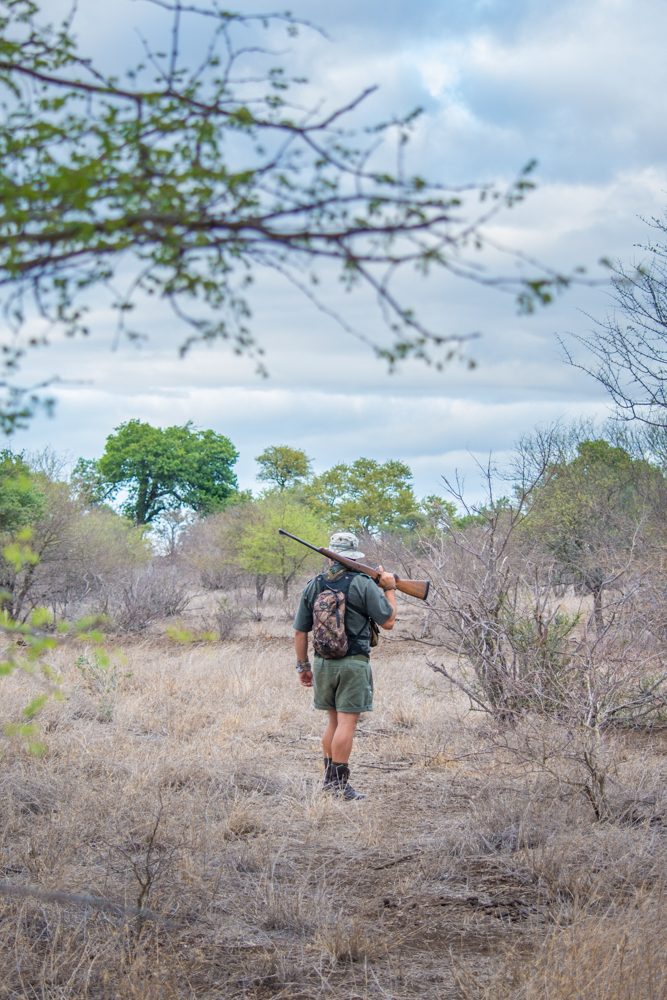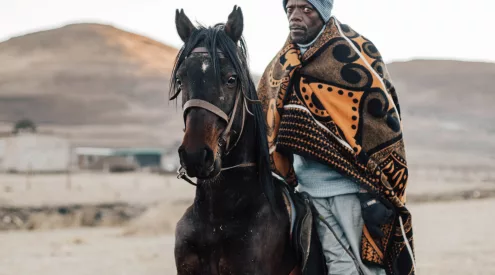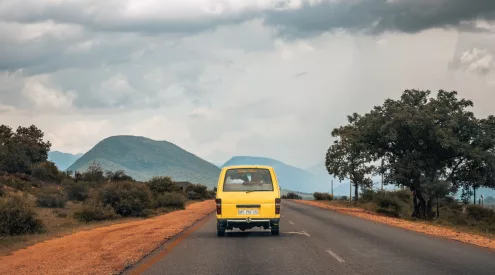Did you know only six percent of the Kruger National Park is accessible to visitors via the main public roads? The best way to experience more is on foot.
For our April 2016 issue, I tackled the Olifants Wilderness Trail – a three-night wilderness experience at an intimate and rustic bush camp on the banks of the Olifants River – and several other walks from the main camps. Each day’s walk on the wilderness trails covers an average of five to six kilometres and takes roughly four hours. There’s no hard climbing or bundu-bashing, but a basic level of fitness is recommended. It’s your best chance to take in the little details of the reserve you wouldn’t experience from the car, like the different colours of rhino and elephant dung (due to plant tannins) and the colour of the flies that sit on it – blue ones are known to indicate a kill nearby.
I also learnt invaluable tidbits about Kruger’s smaller creatures. For instance, did you know you shouldn’t pick up tortoises? They keep a special reserve of water in a sac at the rear of their bodies and if disturbed they can dehydrate. I also learnt that dung beetles lay 60 eggs – one per ball of dung, which they then have to roll up hills and over rocks before being buried (and, in all likelihood, dug up in winter by hungry honey badgers).
In truth, I now don’t want to see Kruger in any other way except with my tackies on.
Read the full story in our April 2016 issue, and in the meantime whet your appetite on the photos below.
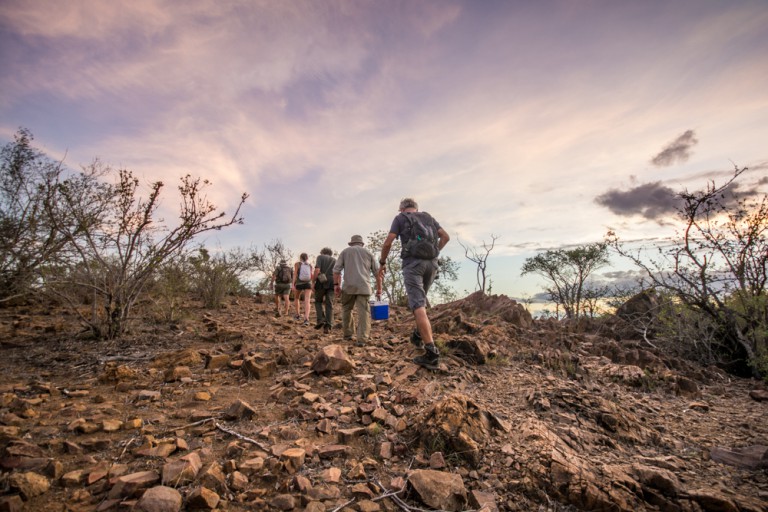
The Olifants Wilderness Trail caters to a maximum of eight people and consists of several morning and afternoon walks from a private bush camp.
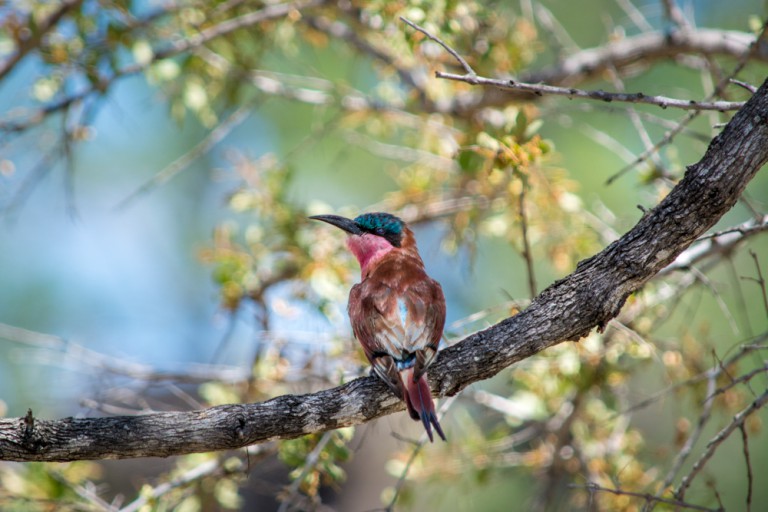
A carmine bee-eater perches on a branch close to camp.
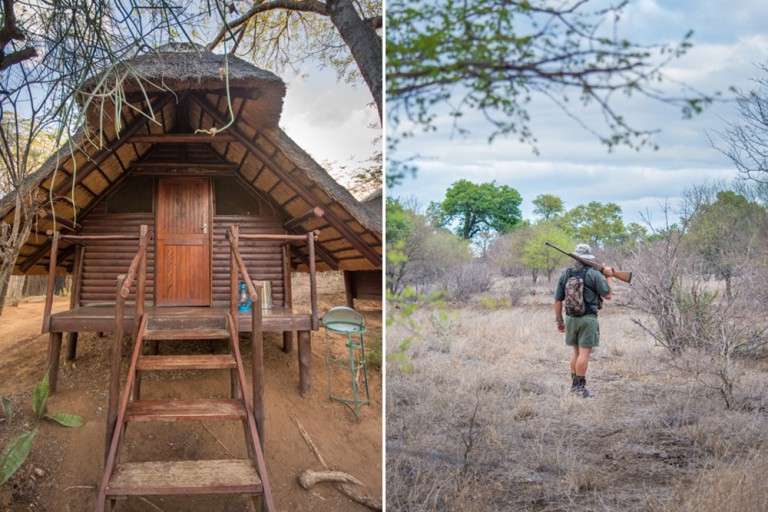
LEFT: Our homes for three nights. Each A-frame sleeps two and there are four in total. If you don’t completely book out the walk with eight people, you could bunk with people you don’t know. RIGHT: On all walks you are accompanied by two experienced rangers equipped with rifles.
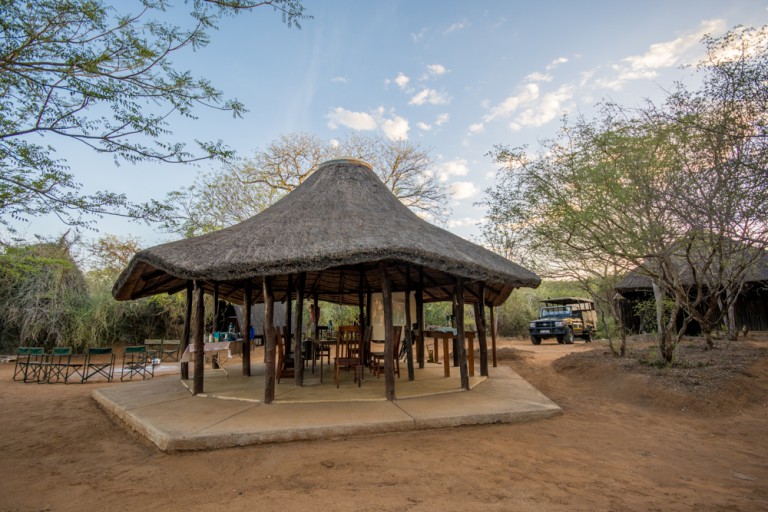
There is no electricity at camp, only paraffin lamps and a fire. All food is cooked for you and it’s hearty, delicious stuff.
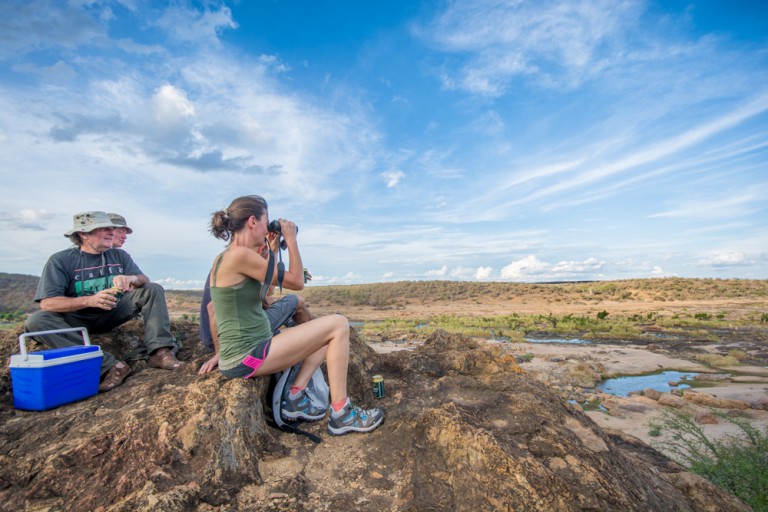
My favourite thing about this wilderness trail was being able to walk along the Olifants River. We stopped to suss out hippos in the pool and watched sunset from the high rock koppies.
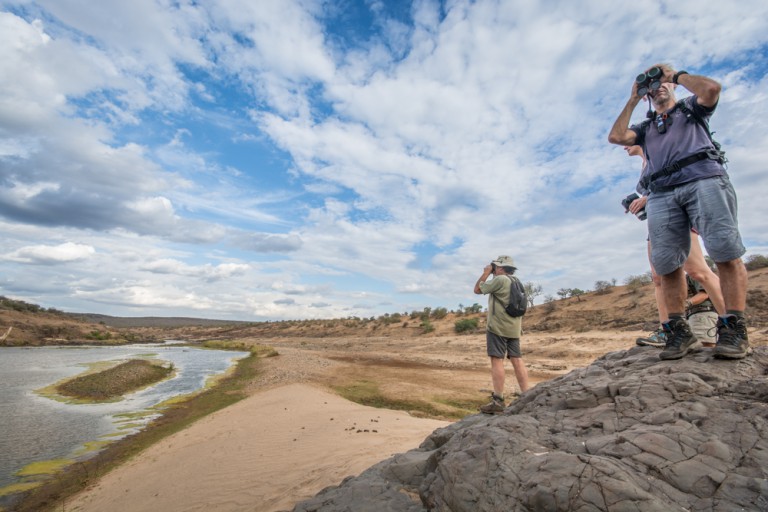
Here you can see down the length of the Olifants River towards Mozambique.
Also read: Kruger National Park’s 10 best lookouts
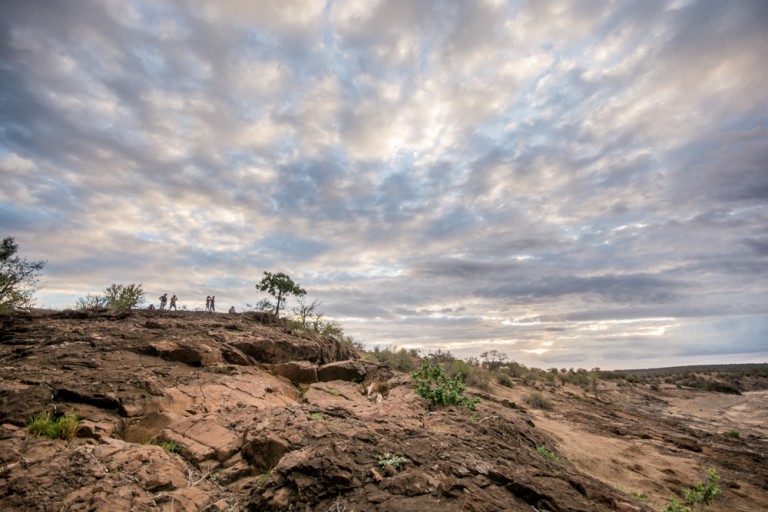
We had a spectacular sunset view from these banks, watching crocodiles laze about and hippo emerge to feed.
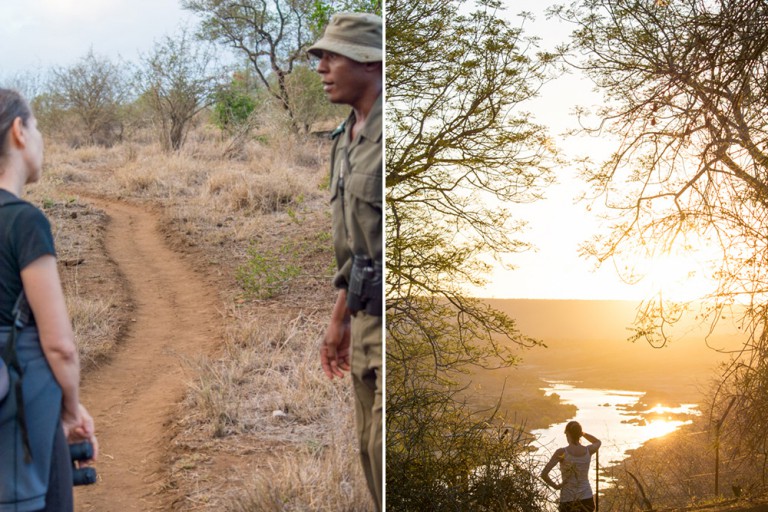
LEFT: Another detail you may miss from the car are the hippo highways that crisscross the bushveld leading from grazing to water. RIGHT: It’s always an early rise, but luckily the view from the Olifants Wilderness Trail camp is golden.
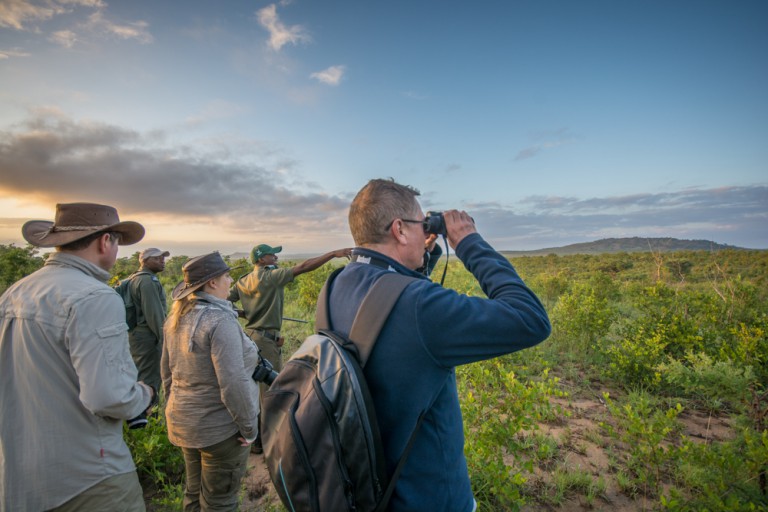
You can see the more lush surroundings of Pretoriuskop immediately. On this morning walk the light was purple, the grass green and happiness levels high.
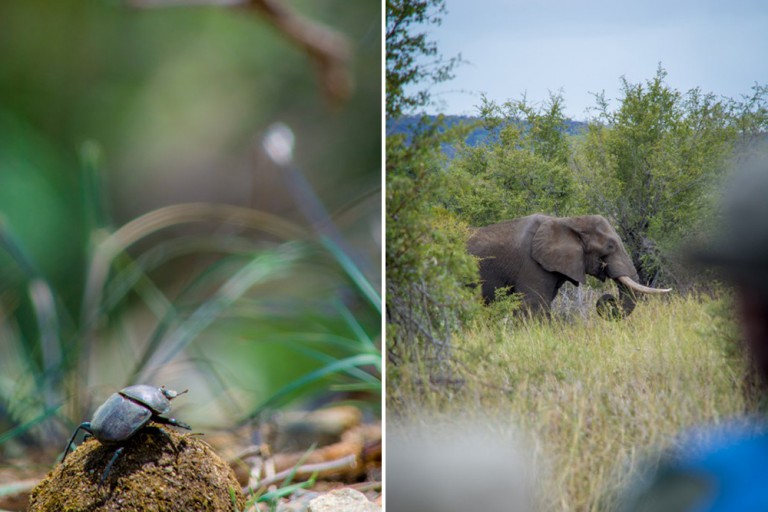
LEFT: A dung beetle scouts the surroundings for obstacles while rolling his precious ball of life to safety. RIGHT: We had an exceptional sighting of an elephant – so close we could hear him crunching his food.

We slowly crept up to an enormous breeding herd of buffalo. They were immensely curious and shuffled to get in front to watch us watching them.
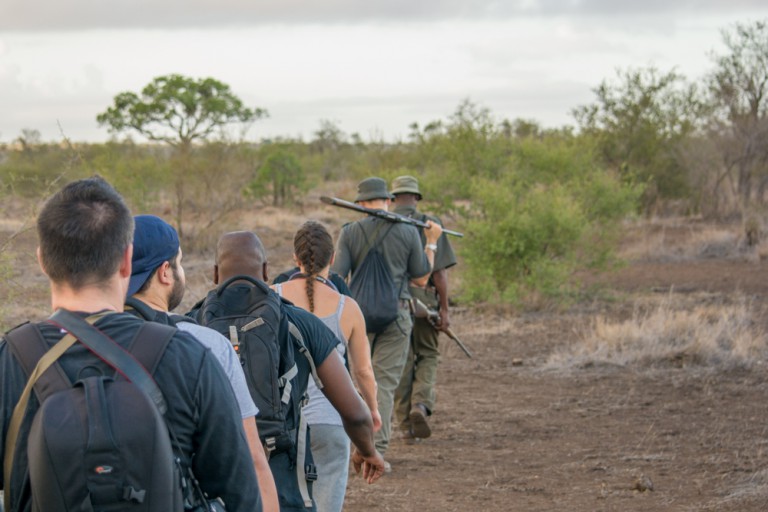
Morning walks from main camps (this one left from Lower Sabie) start at 5am and cost R484 a person. Rates include a drink and morning snack. Be sure to pack your camera and wear dark-coloured clothing.
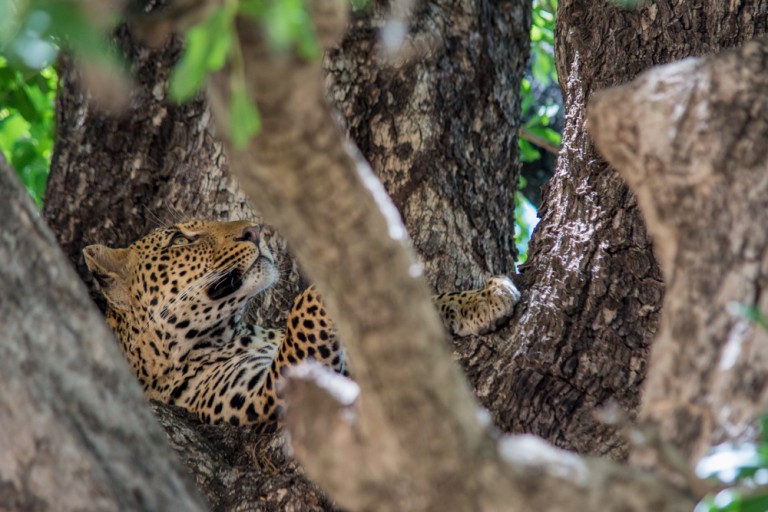
Sadly we didn’t spot any leopards on our walk, but when you’re back at camp by 8am after a morning stroll, there’s more than enough time to catch up on beautiful sightings like this in the afternoon.
Also read: Kruger National Park’s Mananga 4X4 adventure trail
Read the full story in the April 2016 issue of Getaway magazine.
Our April issue is packed full of great holiday ideas for 2016. Get your copy today.
